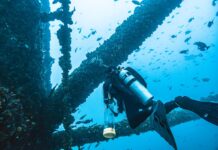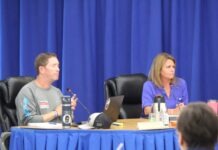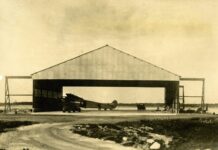The Dry Tortugas represent the tail end of the archipelago called the Florida Keys. In 1908, they were declared a wildlife refuge, in part, to protect nesting sooty terns.
While 1935 is remembered as a tragic year for the Upper and Middle Keys, due to the Category 5 Labor Day Hurricane, it was also the year when President Franklin D. Roosevelt traveled by boat to the Dry Tortugas and declared them a National Monument. They were designated Dry Tortugas National Park in 1992.
Because the Dry Tortugas represent the very end of the coconut archipelago, the Keys’ true southernmost destination, it might seem like a hard place to get to. It is not. If there is one thing Key West, the Florida Keys, and the whole of the Sunshine State do well, it is showing off her assets. Charter boats and seaplanes set a course for the Dry Tortugas from Key West’s Schooner Wharf and surrounding marinas daily, weather permitting.
The big draw is Fort Jefferson at Garden Key. Fort Jefferson, originally designed to protect the shipping lanes between New Orleans and East Coast markets, is the largest brick structure in North America. Work on the fort began in 1846. It took about 16 million red bricks to build the fort’s walls that stood a menacing 45 feet high. Most of the back-breaking work was done by slaves rented out by their Key West owners for $20 a month. By the time the walls were completed, they encompassed 11 of Garden Key’s 16 total acres. While hundreds of cannons fortified the walls and the fort’s interior was cultivated with rich topsoil and a soft emerald mat of Bermuda grass, the structure was never completed.
Fort Jefferson never saw any combative Civil War action, though it did serve as a Union prison for deserters, Confederates and their sympathizers. One of the men at the fort was a man named McClune. In his diary, he wrote: “It is pleasant to climb to the top of the fort on a calm, clear day, and take a view of the surrounding scenery. Away in the distance, the reefs are bordered by the dark-blue ocean. As the water decreases in depth, it changes to an azure blue.”

Diary entries recorded by those poor souls at the fort were not always filled with rosy observations. Prisoner Samuel Arnold, for instance, wrote from a different point of view. “Without exception, it was the most horrible place the eye of man ever rested upon, where day after day the miserable existence was being dragged out, intermixed with sickness, bodily suffering, want and pinching hunger, without the additional acts of torture and inhumanity that soon I became a witness of.”
Mosquitoes were part of the misery at the fort and everywhere in the Florida Keys. Along with the tropical heat, mosquitoes were a harsh, painful reality. Mosquito netting was at a premium, and not everyone had it, certainly not the prisoners. They also transmitted a tropical malady called yellow fever. It was a nasty bug, debilitating, and the symptoms it delivered could be deadly. The disease struck in two waves. Initial symptoms include fever, headaches and chills, followed by a short remission. When the disease rebooted, symptoms included high fevers, intense headaches, and hemorrhaging from the nose and gums. The condition was also accompanied by jaundice and bloody vomit.
Fort Jefferson was hit hard. The fort doctor, Dr. Joseph Smith, succumbed to the disease.
Fortunately, though for the most unfortunate of reasons, there was another doctor at the fort – Dr. Samuel Mudd. Mudd was a prisoner who was sentenced to imprisonment at the isolated outpost after he was found guilty of aiding and abetting a presidential assassination.
At Ford’s Theater, actor John Wilkes Booth saw the president sitting in his chair and watching the show. Booth stepped up behind him and fired the fatal bullet that ended his life. After he fired his shot, Booth famously jumped from the balcony and snapped a bone in his leg when he landed on the unforgiving wood of the stage. Dr. Mudd is the doctor convicted of treating Booth’s leg and then allowing him to rest for a handful of hours before he continued his run from the long arm of the law.
When Mudd was caught and tried, he was sentenced to time at the fort along with four other alleged co-conspirators. When the fort’s doctor succumbed to yellow fever, Dr. Mudd filled in, treating soldiers and prisoners alike. He, too, became infected with the disease, but Mudd made a full recovery. The doctor was credited with saving lives and was ultimately pardoned by President Andrew Johnson. Mudd was released from the prison fortress on March 11, 1869. When visiting Garden Key and touring North America’s largest brick structure, Mudd’s cell at the fort is one of the sights to see.






















